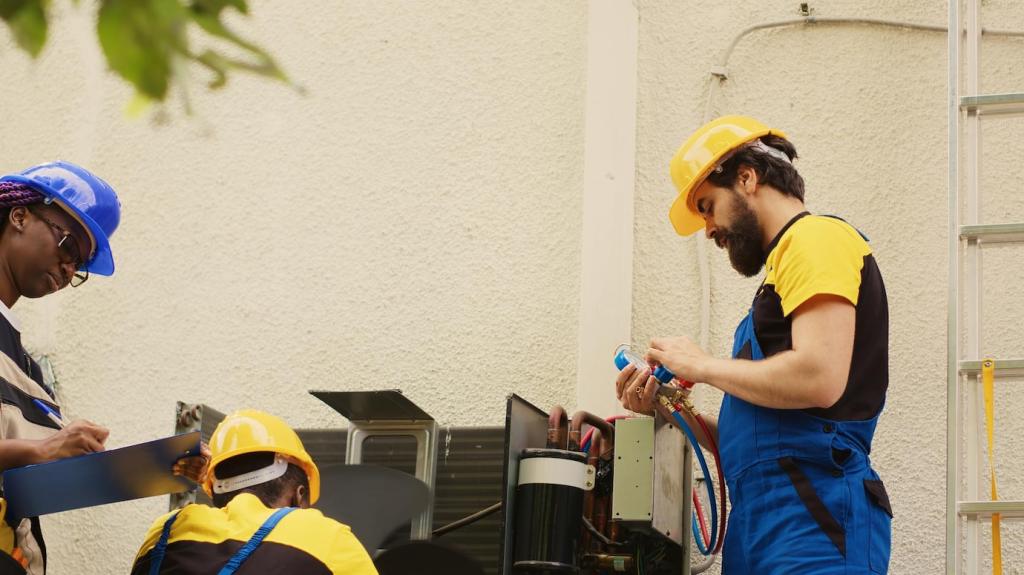
Greener Furniture Care: Practical Ways to Reduce Environmental Impact
Chosen theme: Reducing Environmental Impact in Furniture Maintenance. Welcome to a friendlier, cleaner approach to caring for the pieces you love—one that protects indoor air, cuts waste, and keeps furniture beautiful for years. Stay with us, share your tips, and subscribe for fresh ideas that turn everyday maintenance into a lighter footprint.
Why Greener Furniture Maintenance Matters Now

The Hidden Footprint of Cleaning
Many conventional polishes and sprays release volatile organic compounds that linger in the air and add to indoor pollution. Choosing low-VOC formulas, reusable cloths, and minimal packaging reduces emissions, plastic waste, and transport impacts while keeping your furniture gently cared for.

Indoor Air Quality and Your Health
Aerosol cleaners and strong fragrances can irritate lungs and create unnecessary chemical exposure at home. Low-VOC, fragrance-free, and plant-derived products reduce irritants, protect sensitive family members, and still deliver reliable maintenance results without harsh residues or lingering smells.

A Personal Aha Moment
I once polished a vintage sideboard with a strong solvent spray. It gleamed, but the room smelled harsh for hours. Switching to a water-based, low-VOC wax gave the same luster without the headache, and the wood grain looked richer after regular, gentle upkeep.
Choosing Low-Impact Cleaners and Materials
Look for certifications such as EPA Safer Choice, Green Seal, or UL GREENGUARD to cut through marketing claims. Avoid vague terms like “green” without evidence. Short ingredient lists, clear dilution guidance, and transparent sourcing are signs a product respects both your furniture and the environment.


Choosing Low-Impact Cleaners and Materials
For sealed wood, a few drops of mild soap in warm water and a slightly damp cloth lift grime gently. For oiled wood, a beeswax and food-grade mineral oil blend nourishes without rancid odors. Always test in an inconspicuous spot, use soft motions, and dry immediately to protect the finish.
Sunlight, Humidity, and Heat
UV light fades finishes and dries wood. Use blinds, rotate pieces, and keep relative humidity stable to prevent cracks. Add coasters and trivets to stop heat rings on tables, and leave a small airflow gap around radiators to protect legs and joints from drying stress.
Small Fixes That Prevent Big Replacements
Tighten screws each season, replace felt pads, and level wobbly legs before joints loosen further. A dab of wood glue in a loose dowel, or new chair glides on abrasive floors, can add years of service and avoid the emissions of replacing a whole piece prematurely.
A Simple Seasonal Checklist
Quarterly, dust thoroughly, inspect joinery, refresh protective wax where needed, and spot-treat stains. Biannually, deep-clean hardware and check for pests in hidden drawers. Set calendar reminders and share your checklist with friends—community accountability keeps sustainable habits alive.
Water and Energy Smarts in Everyday Care
Most mild soaps perform well in cool water, especially when combined with soft cloths and gentle agitation. Start with the least aggressive method first, spot-clean only where needed, and avoid saturating surfaces. Less water and chemical use equals fewer emissions and better finish preservation.


Water and Energy Smarts in Everyday Care
Hand tools often beat powered ones for delicate jobs, preventing over-sanding and dust. If power is needed, use high-efficiency vacuums with HEPA filters and maintain them for longevity. Rechargeable batteries last longer when stored cool and partially charged, reducing electronic waste.
Repair, Upcycling, and Circular Practices
Loose chair rungs often need only careful clamping and wood glue. Peeling veneer can be re-adhered with heat and patience. Small upholstery tears respond well to hand-stitching and patching. Share your repair wins in the comments—your success story could save another piece from the curb.

Safer Finishes and Responsible Disposal

Waterborne polyurethanes, hardwax oils, shellac, and certified low-VOC products finish beautifully with fewer fumes. Apply thin coats, ventilate well, and follow cure times. A careful application extends finish life, reducing how often you need to refinish—and the materials that go with it.

